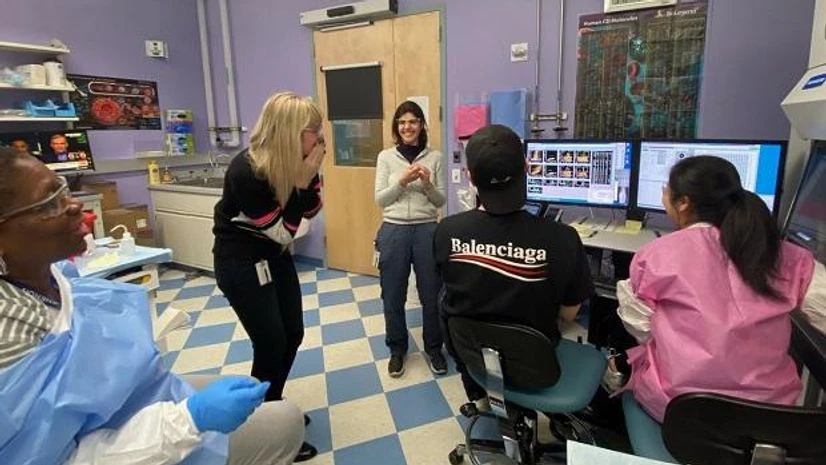On a Saturday afternoon in March as Covid-19 was bearing down on New York City, a dozen scientists anxiously crowded around a computer in a suburban drug company’s lab. They had spent weeks frantically getting blood from early survivors across the globe and from mice with human-like immune systems — all to test thousands of potential treatments.
Now it was time for results.
The screen flashed totals of glowing green dots, hundreds or thousands in most samples. Then they saw some 10s, some twos and finally, zeroes.
The researchers cheered and their boss sent out for champagne.
No dots meant no infected cells. The

)